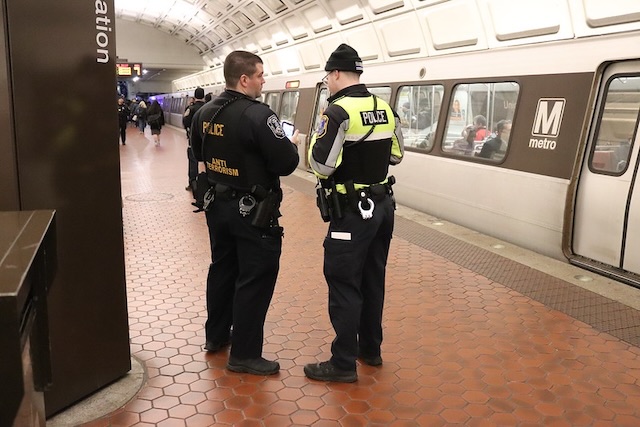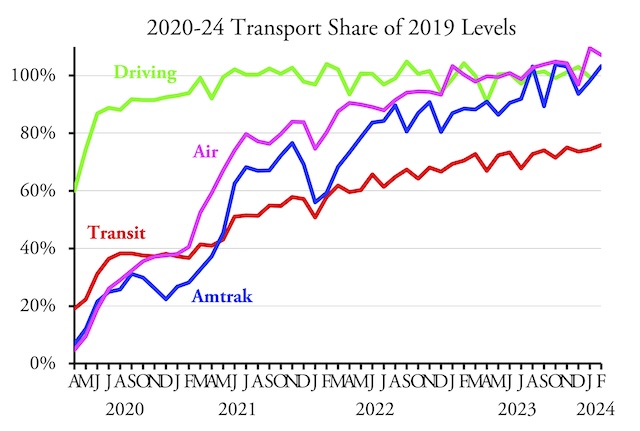A little more than half of America’s incorporated cities collectively lost 2.7 million residents between 2020 and 2023, according to estimates released by the Census Bureau earlier this week. New York City alone lost almost 500,000 residents, or 5.5 percent of its population, while the next 20 biggest losers together lost about half a million people.
Moving day. Photo by James Fee.
The biggest losers, other than New York City, were Chicago (-78,877), Los Angeles (-74,934), San Francisco (-61,530), Philadelphia (-50,142), San Jose (-39,664), and Portland (-22,846). San Francisco’s population slightly recovered between 2022 and 2023, but most major cities that have lost population have seen declines in every year from 2020 to 2023. Continue reading


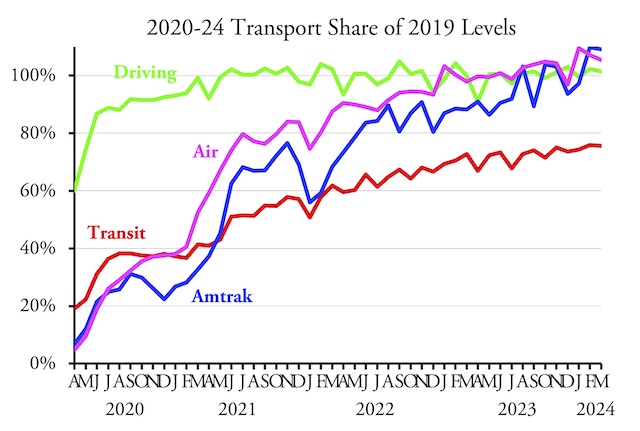

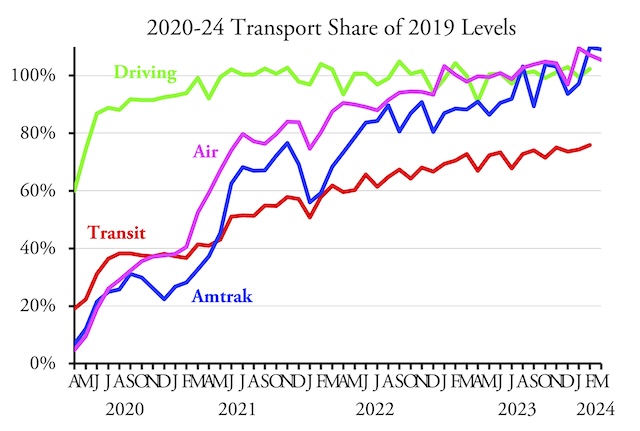
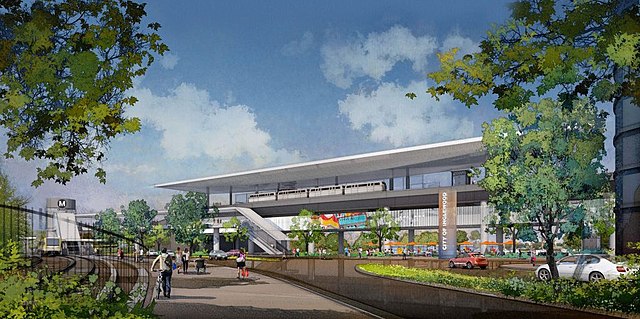

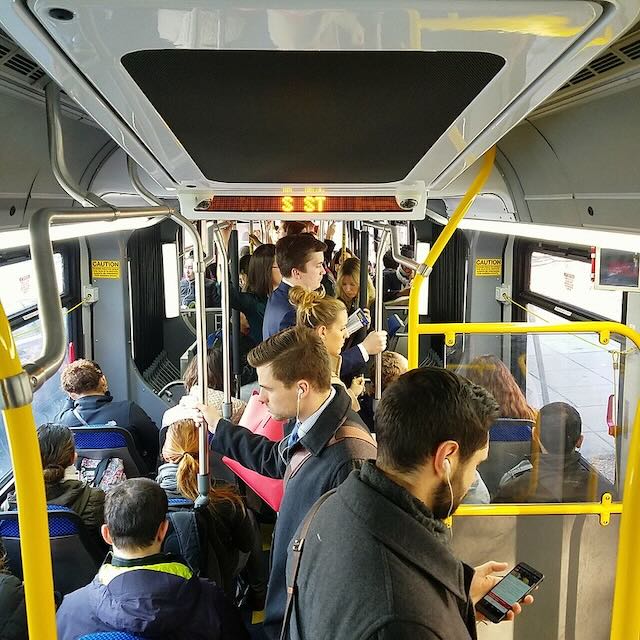 Americans are 25 times more likely to commute by auto than by transit, but an image search for “commute to work” turns up mostly photos of transit riders.
Americans are 25 times more likely to commute by auto than by transit, but an image search for “commute to work” turns up mostly photos of transit riders. 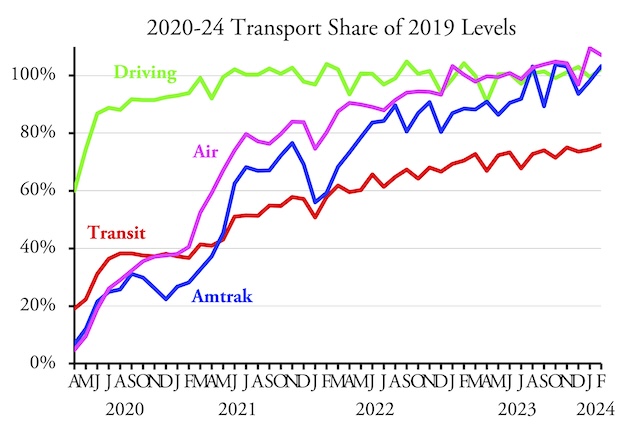 The February 2024 line for driving is obscured by the line for Amtrak, but both are approximately 102 percent.
The February 2024 line for driving is obscured by the line for Amtrak, but both are approximately 102 percent.